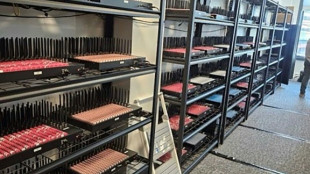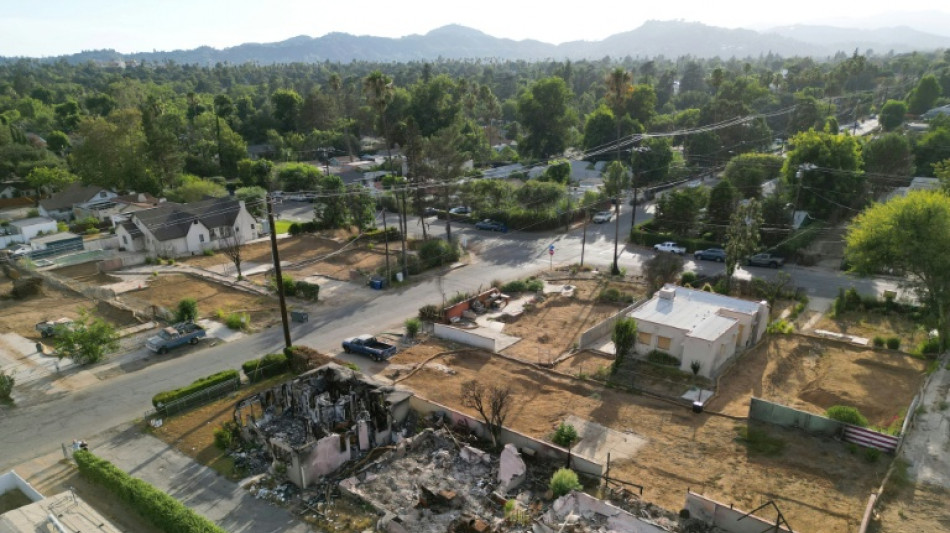
-
 Trump lashes out as suspended TV host Kimmel returns to air
Trump lashes out as suspended TV host Kimmel returns to air
-
Yankees clinch MLB playoff berth with walk-off win over White Sox

-
 Australia lose fullback Kellaway ahead of Bledisloe Cup
Australia lose fullback Kellaway ahead of Bledisloe Cup
-
Race for rare minerals brings boom to Tajikistan's mines
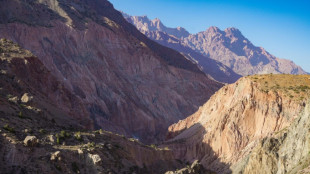
-
 France to host DR Congo emergency conference as Kinshasa calls for aid
France to host DR Congo emergency conference as Kinshasa calls for aid
-
Iran's carpet industry unravelling under sanctions

-
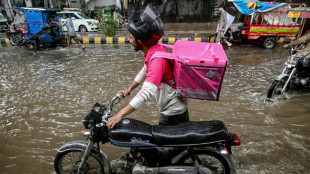 No pause for food delivery riders during Pakistan's monsoon
No pause for food delivery riders during Pakistan's monsoon
-
Asia markets waver after Wall St retreats from record

-
 Brilliant Marquez poised to seal seventh MotoGP title in Japan
Brilliant Marquez poised to seal seventh MotoGP title in Japan
-
14 killed, 124 missing in Taiwan after barrier lake burst
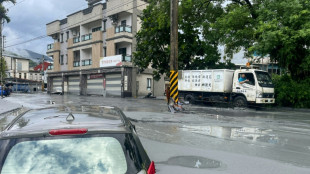
-
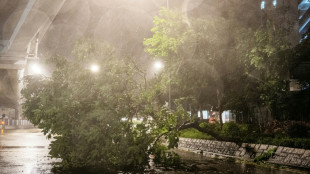 14 killed by lake burst in Taiwan as Typhoon Ragasa wreaks havoc
14 killed by lake burst in Taiwan as Typhoon Ragasa wreaks havoc
-
In just one year, Google turns AI setbacks into dominance

-
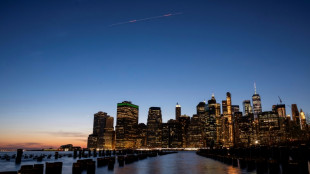 New York's finance sector faces risks from Trump visa crackdown
New York's finance sector faces risks from Trump visa crackdown
-
Toxic homes a lasting legacy of Los Angeles fires
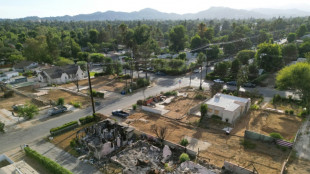
-
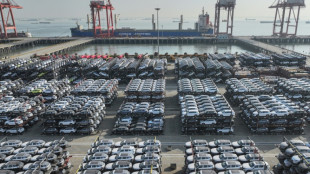 China steps into spotlight at UN climate talks
China steps into spotlight at UN climate talks
-
Guineans approve new constitution by wide margin, pave way for elections

-
 WhatsApp, Twitch among sites that could face Australia under-16s social media ban
WhatsApp, Twitch among sites that could face Australia under-16s social media ban
-
'Guess what!': Macron phones Trump after blocked by presidential convoy

-
 Journal retracts study linking apple cider vinegar to weight loss
Journal retracts study linking apple cider vinegar to weight loss
-
Chile puts forward ex-president Bachelet for UN top job
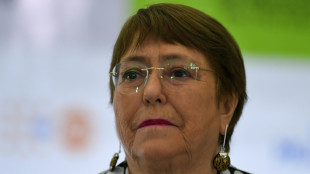
-
 'We're gonna help': Trump to the rescue of struggling Argentina
'We're gonna help': Trump to the rescue of struggling Argentina
-
France's Macron warns against 'survival of the fittest' in world affairs

-
 US hails 'gladiator' DeChambeau as Ryder Cup controversy swirls
US hails 'gladiator' DeChambeau as Ryder Cup controversy swirls
-
YouTube to reinstate creators banned over misinformation

-
 Kane 'welcome' to make Spurs return: Frank
Kane 'welcome' to make Spurs return: Frank
-
Trump says Ukraine can win back all territory, in sudden shift

-
 Real Madrid thrash Levante as Mbappe hits brace
Real Madrid thrash Levante as Mbappe hits brace
-
Isak scores first Liverpool goal in League Cup win, Chelsea survive scare

-
 US stocks retreat from records as tech giants fall
US stocks retreat from records as tech giants fall
-
Escalatorgate: White House urges probe into Trump UN malfunctions

-
 Zelensky says China could force Russia to stop Ukraine war
Zelensky says China could force Russia to stop Ukraine war
-
Claudia Cardinale: single mother who survived rape to be a screen queen

-
 With smiles and daggers at UN, Lula and Trump agree to meet
With smiles and daggers at UN, Lula and Trump agree to meet
-
Iran meets Europeans but no breakthrough as Tehran pushes back

-
 US veterans confident in four Ryder Cup rookies
US veterans confident in four Ryder Cup rookies
-
Ecuador's president claims narco gang behind fuel price protests
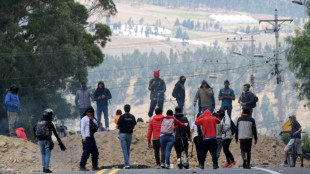
-
 Qatar's ruler says to keep efforts to broker Gaza truce despite strike
Qatar's ruler says to keep efforts to broker Gaza truce despite strike
-
Pakistan stay alive in Asia Cup with win over Sri Lanka

-
 S.Korea leader at UN vows to end 'vicious cycle' with North
S.Korea leader at UN vows to end 'vicious cycle' with North
-
Four years in prison for woman who plotted to sell Elvis's Graceland
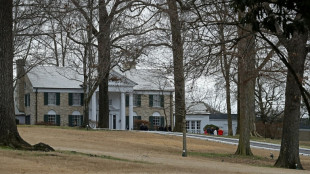
-
 'Greatest con job ever': Trump trashes climate science at UN
'Greatest con job ever': Trump trashes climate science at UN
-
Schools shut, flights axed as Typhoon Ragasa nears Hong Kong, south China
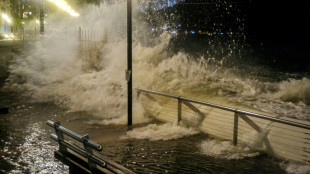
-
 Celtics star Tatum doesn't rule out playing this NBA season
Celtics star Tatum doesn't rule out playing this NBA season
-
Trump says NATO nations should shoot down Russian jets breaching airspace

-
 Trump says at Milei talks that Argentina does not 'need' bailout
Trump says at Milei talks that Argentina does not 'need' bailout
-
Iran meets Europeans but no sign of sanctions breakthrough

-
 NBA icon Jordan's insights help Europe's Donald at Ryder Cup
NBA icon Jordan's insights help Europe's Donald at Ryder Cup
-
Powell warns of inflation risks if US Fed cuts rates 'too aggressively'

-
 Arteta slams 'handbrake' criticism as Arsenal boss defends tactics
Arteta slams 'handbrake' criticism as Arsenal boss defends tactics
-
Jimmy Kimmel back on the air, but faces partial boycott

| RBGPF | -1.74% | 75.29 | $ | |
| VOD | -0.26% | 11.36 | $ | |
| RELX | -1.31% | 46.47 | $ | |
| CMSC | -0.41% | 24.15 | $ | |
| RYCEF | 0.64% | 15.74 | $ | |
| AZN | -2.01% | 75.97 | $ | |
| GSK | -0.96% | 40.52 | $ | |
| RIO | -0.13% | 63.57 | $ | |
| NGG | 0.56% | 71.36 | $ | |
| BTI | -1.28% | 53.19 | $ | |
| CMSD | -0.58% | 24.32 | $ | |
| JRI | 0.28% | 14.04 | $ | |
| BP | 1.07% | 34.74 | $ | |
| SCS | -0.18% | 16.87 | $ | |
| BCE | 0.73% | 23.24 | $ | |
| BCC | -0.6% | 78.97 | $ |

Toxic homes a lasting legacy of Los Angeles fires
The fires that tore through Los Angeles nine months ago didn't destroy Karen Girard's home. But the smokeleft her walls, floors and furniture infused with a toxic cocktail.
Tests have found heavy metals like lead, arsenic, and zinc, as well as volatile organic compounds like cyanide and furfural that have left her home uninhabitable.
When the flames razed neighboring houses in January during a terrifying firestorm in Altadena, Girard was astonished to learn her property was spared.
"I thought I should go out and buy lottery tickets, because I never thought I would be this lucky again," she told AFP.
But even after only short visits Girard finds herself suffering from increasing asthma attacks.
Tests revealed problems she couldn't see -- things she says mean the house is no longer safe.
"I realized that even though the home was still standing, it might be lost to me," the 58-year-old designer said.
- Unseen disaster -
The wildfires that ravaged the Los Angeles area in January killed 31 people directly, and razed more than 16,000 buildings, tearing a swathe through the working- and middle-class neighborhood of Altadena and the upmarket enclave of Pacific Palisades.
Horrifying pictures of a burned out landscape were broadcast around the world, showing acres (hectares) of almost unimaginable devastation, in one of the most expensive natural disasters the world has ever seen.
But among the embers smoldered another, less-visible disaster: the pollution released when homes, cars, televisions, household goods and batteries burned.
Driven by gusts reaching 100 miles (160 kilometers) and hour, this poisonous soup seeped under neighbors' doors and through vents.
"The potential toxicity of the mixture that came off these fires is probably much greater than what we saw in other major fires we've experienced in the US, because those fires did not affect as many urban structures," explained Michael Jerrett, a professor of environmental science at the University of California Los Angeles.
His team tested the atmosphere in affected communities this spring and found abnormal levels of hexavalent chromium, a carcinogen.
Nanoparticles could have been transported up to six miles, potentially affecting tens of thousands of people, he says.
"They are so small that they're capable of penetrating the indoor environment with high efficiency."
"It's really important that people trying to move back into their homes have them properly remediated."
But getting insurance companies to pay up has proven complicated.
Girard says she is stuck in a battle between experts, with the damage restoration company she hired recommending replacing all her furniture, and even treating the frame of her house.
The firm hired by her insurance company, however, insists that a vacuum cleaner equipped with a filter to capture fine particles will be enough to make the place habitable.
- Insurers -
To Girard it seems like the company is prioritizing profit over her wellbeing.
"While it feels like business to them, it doesn't feel like business to me," she said.
"This is my home. This is a place that I've lived for a couple of decades, and it is a place I desperately want to come home to."
Girard's insurer, Farmers, told AFP: "We continue to work with our customer to resolve this claim and remain willing to review any additional information they may wish to provide."
The problem when dealing with insurance companies -- a frequent topic of complaint in high-cost California, even without a major disaster -- is that they appear to be a law unto themselves, says Jane Lawton, founder of the Eaton Fire Residents United association.
"There are no clear standards on (smoke claims), so insurance companies can deny what they want," she said.
Her organization has mapped more than 200 tests conducted on homes in Altadena. All show varying degrees of contamination.
"This is going to be like 9/11," said Lawton, referencing the 2001 attack in New York where people in a wide area around the World Trade Center suffered from chronic respiratory illnesses and elevated rates of some cancers after the twin towers collapsed, releasing clouds of dust and debris.
California's largest insurer, State Farm, which has so far paid out $4.5 billion in relation to the fires, said it "evaluates each claim, including smoke claims, on a case-by-case basis."
But for Priscilla Munoz, they are dragging their feet.
Munoz, who lives a mile from the disaster area, spent $10,000 on a study that found lead in her home and still doesn't know if the insurer will pay to clean it up.
"Lead... goes into things," she says, worrying about her two young children and their plush toys.
"I don't want them snuggling up to a toxic stuffy."
A.Ruegg--VB

